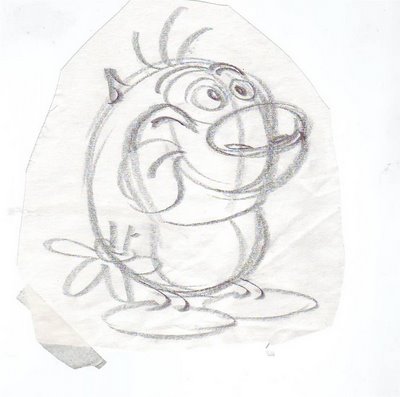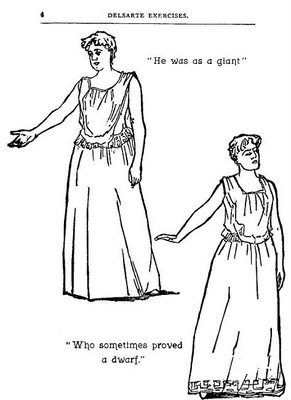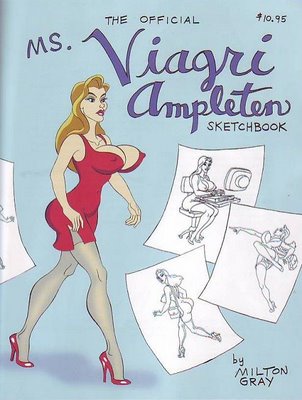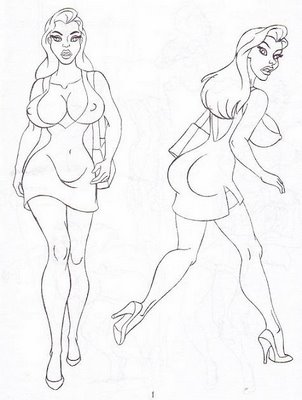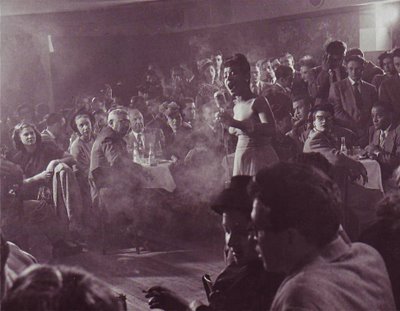 I love crowd shots. They remind me how much fun it is to be with a lot of people who like the same things I like. One of my all-time favorite crowd photos is this one (above) in what appears to be a nightclub. The people look like they came out of an old master's painting like Gericault's "Raft of Medusa." This is every performers dream, to be surrounded by listeners who "get it," who are on the same wavelength. Click on the picture to see the detail.
I love crowd shots. They remind me how much fun it is to be with a lot of people who like the same things I like. One of my all-time favorite crowd photos is this one (above) in what appears to be a nightclub. The people look like they came out of an old master's painting like Gericault's "Raft of Medusa." This is every performers dream, to be surrounded by listeners who "get it," who are on the same wavelength. Click on the picture to see the detail. Crowds look better in magazines than in newspapers. Papers just can't resolve the faces, at least not photo faces. Drawn crowds like the Wood drawing above look good in any print medium. If you're a print cartoonist learn how to draw funny crowds!
Crowds look better in magazines than in newspapers. Papers just can't resolve the faces, at least not photo faces. Drawn crowds like the Wood drawing above look good in any print medium. If you're a print cartoonist learn how to draw funny crowds!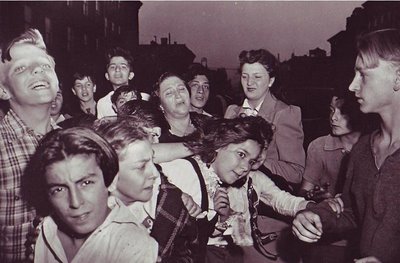
I know who did this crowd: Weegee the great New York tabloid photographer. A gambler's just been shot and a torrent of humanity streams out of the tenaments to get a look. It has that gritty 50's feeling. Humanity is portrayed as consisting of angels and demons with every shade between.


